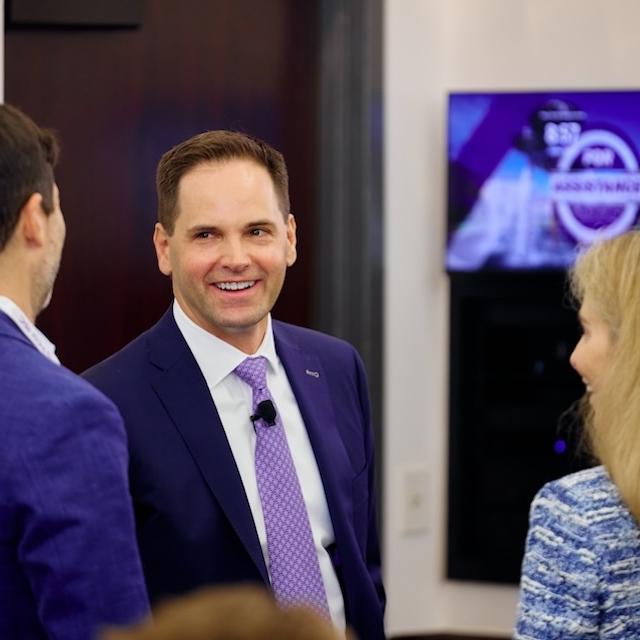
Pit Stop or Pitfall? TCU Investment Expert Weighs in on Private Equity in Collegiate Athletics
“Seismic shift” has been used a lot to describe the landscape of collegiate athletics
in the wake of House v. NCAA, which paved the way for universities to share revenue
directly with student-athletes. Now, private equity threatens to further shift this
reality. The Big Ten Conference is in negotiations on a private capital deal reportedly
worth $2.4 billion to its member institutions. Jason Safran, Texas Christian University’s
chief investment officer, recently sat down with TCU News to explain private equity
and its potential impact on university athletics.
Let’s lay some groundwork first. For our readers, what is private equity?
To put it simply, private equity refers to ownership investments in privately held
companies (i.e., not listed on a public exchange). Instead of buying shares on Wall
Street, private equity firms purchase whole companies (or big pieces of them) that
aren’t publicly traded. You can think of private equity like a Formula 1 pit crew
for companies — they take a machine that’s running, pull it into the garage, change
out what’s not working, refuel it and send it back out to perform better than before.
The goal is to achieve more speed, more wins and a higher resale value down the road.
The investors — usually big players like endowments or pensions — provide the cash,
while the private equity firm acts as pit crew: It acquires, renovates, adds fuel to the business and eventually sells. These investments
require patience, as money is often tied up for five to 10 years before the payoff
is realized. Private equity is just one flavor of private capital, alongside things
like private debt (lending money directly), real estate, infrastructure and venture
capital (funding the next big thing before it goes public).
What does a transaction look like in private companies?
I’ve seen plenty of private transactions, and no two deals are the same. But in broad
strokes, a traditional private equity deal works like this: A firm raises capital
from investors, buys a company that isn’t public and tunes it for peak performance
before selling it for a profit. Think again of the Formula 1 pit crew analogy. They don’t rebuild the car from scratch
— they change the tires, fine-tune the engine and swap out whatever’s slowing it down.
That might mean new leadership, a better playbook, cleaner operations or more innovative
technology. The best deals are part precision engineering, part developing capabilities
to withstand an endurance race — that time in the pit that determines whether the
company finishes the race stronger or stalls before the finish line.
How could “private equity” apply to an athletic conference like the Big Ten?
Now we’re in uncharted territory — and some of the Big Ten’s own members, notably
Michigan, are waving the caution flag. The idea of private capital in college athletics
sounds jarring. It’s the kind of headline that makes people squirm — Wall Street in
the locker room, clipboard in hand, asking about return on investment before kickoff.
Nobody wants the sport of college athletics to lose its tradition. Still, the rumored
transaction isn’t a hostile takeover. The proposal on the table appears to be more
about leasing part of the barn to upgrade equipment than selling the family farm.
Universities would keep control; the outside investor would provide capital to modernize
how the conference handles media and sponsorships.
What are some potential advantages and disadvantages of private equity partnering
with a collegiate athletic conference?
This conference partnership idea appears to be in the design stage so a lot can happen.
And it’s good to test new ideas. But a conference partnership idea with private capital
might stay in the garage and never be taken out on the track. From what’s been reported,
the most significant advantage would be an immediate cash infusion that helps Big
Ten universities navigate the fast-changing economics of college sports. A transaction
could potentially allow the conference members to centralize media and sponsorship
rights, streamline operations and build the kind of scale needed to stay competitive
in an era that is moving very fast.
There are several risks to consider with any strategic partnership. Alignment matters, and getting that right is critical. The mechanics of any deal must be aligned with the mission of the universities. It is no secret that public trust in higher education has declined over the last decade. University leaders need to reaffirm the value they bring to students and society at large. Does the inclusion of private equity help or hurt this issue? Any multibillion-dollar private equity transaction with academia will attract significant media attention and scrutiny. Collegiate athletic conferences should carefully consider the political and public relations risks of a private equity partnership.
What these headlines suggest is that higher education is facing significant financial
pressures. And fresh capital sounds tempting. It’s like a turbo boost — thrilling
in the moment, dangerous if you hit it in the wrong gear. Speed helps only if you’re
steering in the right direction — alignment matters.
